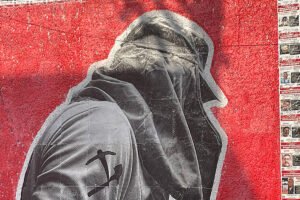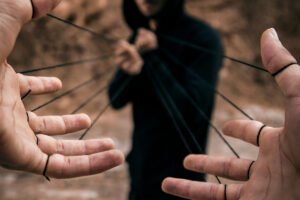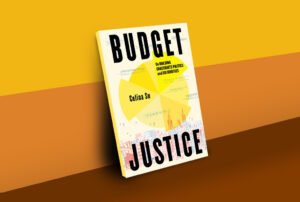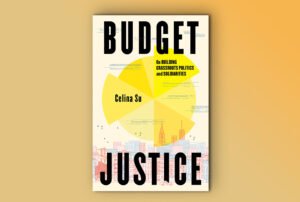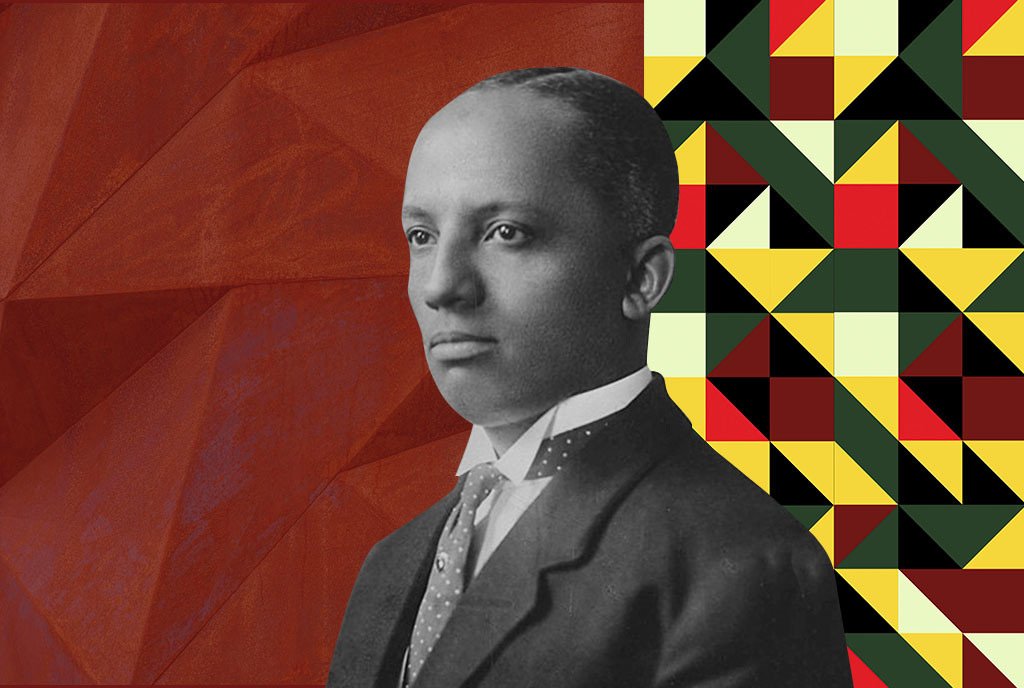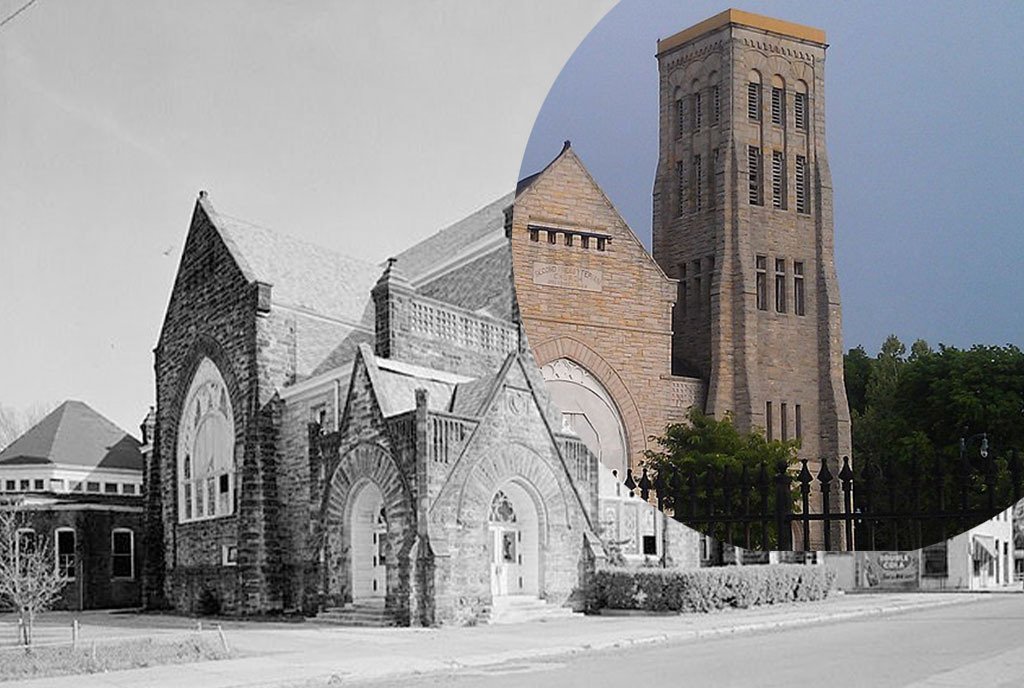
Click here to download this article as it appears in the magazine, with accompanying artwork.
Editors’ note: This article is from the Spring 2022 issue of the Nonprofit Quarterly, “Going Pro-Black: What Would a Pro-Black Sector Sound, Look, Taste, and Feel Like?”
There is a shift afoot in the field, from critiquing white supremacist culture and calling out anti-Blackness to designing for pro-Blackness. So, we followed up with some of the writers who lent their expertise to this edition, and also interviewed Shanelle Matthews, the communications director for the Movement for Black Lives, in order to go more deeply into defining what we mean by pro-Blackness. We asked them the following questions:
What does pro-Black mean?
What are the characteristics of a pro-Black organization?
What would a pro-Black sector sound, look, taste, and feel like?
The conversations that ensued can be found in full in this issue of NPQ. What follows are some of the main takeaways from those interviews.
What Does Pro-Black Mean?
The key characteristic of pro-Blackness is that it deals with power. In fact, pro-Black means not only directly dealing with power but also building power for Black people. As such, it is perceived as a bold or daring statement that often triggers discomfort in white people.
Dax-Devlon Ross, writer and equity and impact strategist, shares his reaction to being invited to be part of a conversation on being pro-Black:
It made me think of Black Power and discomfort It also made me feel a certain level of challenge. I thought, Oh, they want to go there with this! And it literally sent a sensory experience through my body. And I thought, Okay, let’s go; let’s actually explore this and try to forget about all the people who might be offended, or who might say, “Oh, but what do you mean, and who are you leaving out?”. . . . Let’s just name and center this right here as pro-Black.
Liz Derias, codirector at CompassPoint, a nonprofit leadership development practice that has been focusing on pro- Black approaches for the past few years, says,
To be pro-Black is to build pro-Black power. And when we talk about building power at CompassPoint, we define it as building our capacity to influence or shape the outcome of our circumstances.
Shanelle Matthews, communications director for the Movement for Black Lives, says,
For me, the root of this conversation is power. So, that’s being able to exist as a Black person in this country without the gaze of whiteness or having to pretend to be somebody that one is not, in terms of one’s self, one’s identity, and one’s self-determination in one’s everyday life.
Building pro-Black power requires an understanding of what power means for Black people. Derias says,
Building Black power, building pro-Black organizations, and building a pro-Black movement requires us to take a look back at the ways that power has existed for us in our communities before systems of oppression, in an effort to bring it into the current context—not only to challenge the systems of oppression but also to carry forward what has been intrinsic to our communities.
Matthews agrees:
At the root of what I think pro-Blackness is about is advancing policies, practices, and cultural norms that allow Black communities to be self-determined and for us to govern ourselves. To have enough economic, social, and political power to decide how, when, and where to have families. To determine where to live. To have the choices and the options to make decisions, just like everybody else—about schools, education, jobs, and quality of life.
There’s also an element around governance. What does it mean to be able to determine how our cities exist? We are often cornered into particular places inside cities that don’t give us very many options in terms of grocery stores . . . and other essential needs.
There is a point of tension about whether pro-Blackness takes anything away from other racialized groups. For Ross, his expected negative reaction from white people is one that demonstrates a misperception of what pro-Black actually means. He says,
It’s not just a place where Black folks can thrive and be. It’s a place where all folks can thrive and be. Because in my understanding, and how I have referenced and thought about history, whenever Blackness is centered, everybody wins.
However, Isabelle Moses, chief of staff at Faith in Action, has a different take:
I guess it depends on what people value, what they perceive as giving up versus not giving up. So, if people value having the top job, and if that’s a zero-sum thing—where the only way you can express leadership or power is by being the top of whatever the food chain is, or the apex predator, so to speak—then yeah, you might feel like you’re giving up something. But if you can reframe what it means to be powerful, then I think we have a chance.
. . .
So, it just depends on how people think about what the trade-offs are. And I think if we can collectively reframe the trade-offs, then we get closer to creating more conditions for more people to thrive—which, in my opinion, is way more rewarding than having the most money that I could possibly have for myself.
For Matthews, there isn’t a misperception about what pro-Black means in terms of power. In fact, that is exactly where things fall apart. She observes that being pro–Black Lives Matter does not mean one is pro-Black. The “racial reckoning” of the last few years has led many to publicly voice their commitment to the Black Lives Matter social movement. But class interests often clash with these commitments. She says,
For all the people who bought the books, who had one-off conversations, who marched in the streets, who maybe replaced one white board member with a Black board member—well, I don’t want to diminish people’s commitments . . . but those actions are insufficient. The question we have to ask ourselves is, What are we willing to give up in order to be pro-Black?
Moses concludes:
Pro-Blackness isn’t a zero-sum game. It shouldn’t be seen as anti anything else. I think right now there’s this kind of binary orientation. But I think we need to understand pro-Blackness as a way of saying pro-everybody—and by that I don’t mean the equivalent of “all lives matter”! What I do mean is that if you’re pro-Black, you are actually pro-everybody, because you can’t be pro-everybody if you’re not pro-Black.
Pro-Black also means Black people being able to be authentic. Kad Smith, an organizational development consultant, asks, “What would it look like to truly honor the experiences of Black folks, with no asterisk? As in, no conditions attached to the question of what kind of Blackness is palatable and what kind isn’t.” Quoting from a CompassPoint-led cohort member, Smith continues: “Pro-Blackness just looks like being comfortable in my skin.”
Matthews echoes this:
People often support a particular type of Blackness. So, folks are comfortable with people going out and protesting, but if things get what they feel is unwieldy, or people start to uprise in a way that is uncomfortable to them—so, folks bashing in police cars, because police have killed their family and they don’t particularly care about that piece of property over the dead bodies of Black people, or the movement’s demand shifting from accountability to defunding the police—then we often see people’s allegiances to the movement fade.
For Moses, the path to pro-Black is a very personal one of becoming grounded in Black culture, as both identity and community.
I live in Detroit, Michigan. I’ve been here for about four and a half years. And one of the reasons I moved here was to be grounded more in Black culture. I grew up in a supersocialized, white context in San Francisco, going to private schools. Then I lived in Washington, D.C., for a long time. And I wanted to have a more rooted experience in Black communities. And Detroit, I felt, was a place where I could have that experience of being somewhere that really values and centers Black culture as just everyday life. I felt like I hadn’t had that experience before. . . . So, that sense of rootedness in Black community is something that I have been longing for.
She continues,
I’ve learned that it takes more than just having Black skin. What I’ve learned, at least for myself, is that because of the era that I grew up in—the colorblind era, the eighties and early nineties, when folks were embracing this kind of assimilation mantra—I needed to reclaim my identity as a Black person. Because the frame that you’re asked to assimilate into is obviously a white normative frame.
Basically, to be pro-Black is to not have to adhere to the white-dominant status quo.
What Are the Characteristics of a Pro-Black Organization?
Themes are emerging for those building pro-Black organizations. At its most basic, it means being able to talk about issues affecting Black people. Smith shares,
We’re met with a certain level of resistance when we speak about Black-specific issues. So, that is anti-Blackness rearing its head in a very petulant and kind of gross way when Black folks talk about things that are particular to Black people and are met with resistance. A lot of what was coming up in articulating the pro-Black organization is the eradication of that dynamic. So, I can speak to what it means to be a Black person even if I’m the only one. Or even if I’m one of four. I’m not going to be met with, “Wait, wait, wait. We’re not anti-Black. We’re not racist.” We’re going to say, “Oh, let’s go further there. Let’s understand what’s coming up for you.” I feel like that would be in lockstep with other movements toward progress.
This is very tied to another characteristic of a pro-Black organization: Black people being able to step into power without punishment. Smith explains, “A couple of folks from the [CompassPoint] cohort mentioned safety. Safety from discrimination, from undeserved consequences, from systems of oppression.”
Being disadvantaged by existing organizational policies is also punitive. Derias shares,
When I came in [to CompassPoint], I observed that the majority of people who worked at the organization were women, and all the Black women at the organization were mothers. . . . We took a look at what it is that Black mothers value. They value the health of their children. They value time with their children. They value psychological safety for themselves and not to have to be here and worry about their children. . . . And the organization didn’t offer 100 percent dependent coverage. So we had mothers, and sometimes single Black mothers, working at CompassPoint and then working at other jobs just to provide healthcare for their children.
So, in an attempt to build a pro-Black organization, we decided to flip that policy on its head. We wanted to figure out how to prioritize putting money into supporting our staff, which at the core would mean supporting Black mothers. This year we passed a policy of 100 percent dependent coverage for all our parents. Centering Black women wound up expanding the center, because now all of our staff . . . can get care for their children. . . . When we center Black people, we challenge the punitive nature of organizations.
Isabelle Moses agrees.
We operate at Faith in Action under the belief that if you take care of Black people, specifically Black women, everyone in the organization will be taken care of—because the needs of Black women in particular are often so overlooked. And Black women are expected to be the providers, the caretakers, the folks who do things without actually ever being asked, and a lot of that labor goes unseen, unrecognized, unappreciated. And if you start to pay attention to all of the things that Black women do to make an organization successful, and then you provide resources and support for that work to be compensated, to be appreciated, to be recognized, then you realize how much more people actually need in order to thrive in organizations.
And when you meet those needs—when you create space for people to take care of their families during the workday; when you create space for people to take meaningful vacations so that they get actual rest; when you create the conditions for really strong benefits and policies, so people’s healthcare needs are provided for (and they’re not worried about whether they can make their doctor’s appointments on time, because they know that they have the time off to do that); when you create an environment where people aren’t going to be pressured to deliver things at the last minute, because you build in time and space for thoughtful planning so it doesn’t end up on somebody’s plate (often a Black woman’s)—then you can create an organization where Black women can thrive. And if Black women are thriving, everybody is thriving. That’s our fundamental belief.
Building pro-Black organizations means going beyond challenging structures to designing new structures with the values and needs of Black people at the center. Derias says,
Building pro-Blackness and building power require much more than just defending ourselves against anti-Blackness, and much more than just asking white folks in the organization to take a training. It’s really about moving the needle with respect to looking at Black people as the folks who develop our governance, as the folks who, by virtue of our values, lead the development of the systems, policies, practices, and procedures at the organization.
Some organizations institute sabbaticals, which give staff much-needed time to reflect and consider their next move in the work. At Faith in Action, staff who have been there for ten years or longer are eligible. Moses explains,
Depending on what they need, [a sabbatical can be] anywhere from three to five months. And they can put together a plan for the time. Our colleague Denise Collazo used her time to write a book, Thriving in the Fight. Denise has been organizing for twenty-five years and is now our chief of external affairs. And she talks a lot about how that sabbatical was one of the ways in which she got the space that she needed to do the reflection for that book. So, she was able to use that time off to get clear about how it was that she was able to stay in the work.
Denise was an innovator of our Family–Work Integration program, where we strive to reduce meetings on Fridays and limit email. It’s not a day off, but it is a day that you can use to meet whatever needs you have—to catch up on any work from the week that didn’t get done, or sleep in a little and go to a gym class, or take your mom to a doctor’s appointment, or take care of that errand that you’ve been meaning to do—so that you don’t end up feeling like there’s no time for those activities that are really important for one’s well-being. If you center well-being, then you create more opportunity to do better work. … And people are happier. We have a much happier culture.
Sign up for our free newsletters
Subscribe to NPQ's newsletters to have our top stories delivered directly to your inbox.
By signing up, you agree to our privacy policy and terms of use, and to receive messages from NPQ and our partners.
Building pro-Black organizations also includes resourcing Black programmatic work. Derias shares,
We had a plurality of Black staff for the first time in CompassPoint’s forty-seven years. . . . This is important to note, because what we found is that it’s really hard to build pro-Blackness when you are the sole Black person at the organization. I mean, it’s like moving a mountain. And so that plurality provided an opportunity for the Black staff to get together and really interrogate pro-Blackness internally. And as we did that, we really built unity—we built across our values. And that’s when we decided that it was really important for us to resource our Black programmatic work.
Moses agrees, and she shares how being a recipient of a MacKenzie Scott gift makes it possible.
We want to make sure that our teams are resourced. With the gift that we got last year from MacKenzie Scott, we now have the resources to make sure that people can work reasonable hours. If there’s a gap in the organization, we can create a job description and recruit for it. We don’t have to operate out of scarcity; we can operate out of abundance. And that’s so exciting.
This type of pro-Black change in an organization usually requires having Black leadership. Moses says,
I have a hard time seeing how folks who aren’t Black can understand what Black folks need in an organization. Truly. And how they would be able to resource it at the level that’s required. That doesn’t necessarily mean the top people all need to be Black; it just means you have to have meaningful representation of Black folks in leadership, in order for that ethos to get rooted all the way through the organization. I’ve worked in organizations where there were Black staff, but we didn’t have enough power for things to change.
Supporting Black leaders is also critical. I, and others, have written extensively about how they do not have the support they need and often face the sector’s most pressing challenges.1 Derias says,
Now that we have Black people who are taking up positional power, it’s really important to support them. I think what would strengthen the sector is giving time and space for Black people in positional power to learn skills, to network, to vent, to pool resources.
The challenges Black leaders face come from systemic, sectorwide forms and from within organizations and black staff, many of whom want to be experimenting with alternatives to hierarchy.
CompassPoint provides an example. The organization recently underwent a leadership transition that included an interim period during which it tried the holacracy method of decentralized management. It then decided to move forward with a codirectorship model. As Derias describes it,
At the core for [CompassPoint] as we were building a pro-Black organization was experimenting with a new governance model. Holacracy was useful, but it didn’t meet our needs—so, we’re developing a new kind of governance model. There’s nothing really new under the sun—but what it does is push us to center our values.
Smith, who was at CompassPoint during this time of change, adds nuance.
I’m just gonna speak plainly: There was a sense of a commitment to holacracy and shared leadership, and the Black folks on staff were doing some of the implementation and evaluation of that work, and it increased their responsibility and created visibility around their leadership—my own included. And when the organization committed to moving away from that, that was one of the few instances that I would say CompassPoint unintentionally perpetuated anti-Blackness.
Supporting Black leadership can appear to be in conflict with what Smith refers to as Black self-determination. He asks, “What does it look like to have autonomy and agency in an organization that intrinsically depends on collaboration?”
Ross sees this conflict around leadership and forms in his work, too.
What can come next can only come next if we allow for something that has not been allowed, has not been given space to really, really breathe. When I think about organizations, they’re still not giving space to breathe. . . .
How I see that showing up primarily right now is in many ways centered on the question of how we organize ourselves as an entity. And so you’re seeing a lot of folks contesting the model of hierarchy that organizes and cements power in this very concentrated place at the top of the organizational chart. People really want to contest that and find out what are the distributive ways in which we can organize ourselves. . . .
Pro-Black creates the space for that which needs to evolve to evolve. Pro-Black, to me, is connected to the notion of adaptation. It’s connected to, and very much rooted in, the notion of interdependence. It is connected to and rooted in the notion of ideas around vulnerability, and different forms of knowledge and knowing. All of those are invitations to do the exploratory work that is necessary to find out what is next.
There is an opportunity for nonprofit organizations to evolve by learning from Black people’s history and victories, particularly around how to build liberatory identities. Ross says,
A lot of organizations are in the midst of an identity crisis right now. After two years of racial reckoning, they are really deeply asking, “Who are we?” It’s being asked at the generational level. We have younger folks asking the organizations who they are, and it’s causing older folks to ask the question of themselves. . . .
And who in our country has had their identity contested again and again and again, and has had to figure out who they are again and again and again? Black folks. Identity has always been a question: “Are you really human?” “Are you American?” That question of identity has always been at the core of how we have had to orient ourselves and survive. . . .
What can nonprofits learn from folks who’ve had to go through that and answer that question repeatedly over their history in this country?
One way that Black people have defined liberatory identities is by moving beyond binaries to hold multiplicity. This can be a challenge for everyone, including Black people. Ross says,
I spend a lot of time looking at Patricia Hill Collins’s work around Black feminist epistemologies. . . . I find myself referring repeatedly to an article she wrote thirty-six years ago. . . .
She was pushing against binaries in her work. She says—and I paraphrase—“Don’t use what I am proposing here as a world, as the replacement for what currently exists, because that is a problem as well.” That’s still the binary. . . .
It’s much more complex and nuanced to recognize and be able to hold the multiplicity around it. . . .
And, to be quite honest, one of the things that I find in organizational spaces right now—that is, I think, a developmental process—is that the calling out of white supremacist culture is being used as its own kind of bludgeon. It’s becoming now its own orthodoxy, and so everything has to line up in that way.
For Matthews, becoming a pro-Black organization depends on the people in it doing difficult, personal work. For this, the organization needs to be providing political education. She says,
There is no way to enter movement and genuinely advocate for radical ideas without interrogating your allegiances to oppressive systems. So, if we’re not offering political education to our staff and board to understand the complexities and history of anti-Blackness, not only in the United States but also globally—so that they can have enough context to be able to authentically make some of the political decisions and commitments that they want—then we’re missing the mark.
The debate around critical race theory illustrates just how hard it is for us to educate people in America about the history of atrocities that this country has perpetrated against Black people. So, we have to make that commitment in our organizations.
There is tension or conflict not only within organizations, and between organizations and movements, but within movements as well. Matthews shares that movement spaces aren’t always pro-Black either. She admits, “Our movements can be inhospitable to people who are growing.”
What Would A Pro-Black Sector Sound, Look, Taste, and Feel Like?
Imagining a pro-Black sector did not come easily to the writers with whom I spoke. However, the contours are beginning to take shape. One thing is for sure: People want more humanity. At the center of it is Black comfort and joy.
The sound would be that of a space ringing with the laughter of Black solidarity. Ross says,
There’s laughter, there’s commiseration. [Leaders of color are] finding community with each other, and they’re not seeing one another as competitors or as people they need to feel threatened by. They’re defining their tribe.
It would look like trust. Ross says,
It looks like people being trusted to have a sense of what’s needed but also of what’s comfortable and what’s connected to impact. Because if it’s not connected to impact—if it’s not connected to what our mission is—why are you putting it on me? . . . My presence and how I show up in the world shouldn’t be making you comfortable or uncomfortable.
. . . And the trust would extend to foundation partners really resourcing this work. Derias says,
It’s really important that we not be beholden to projects or initiatives that have concrete, predetermined outcomes driven by our foundation folks.. . . Allow us to do the work of building the capacity of staff to play with this vision of pro-Blackness, to experiment with it internally, to experiment with it externally. That’s really important for our sector.
It would taste like the deliciousness of complexity. Ross imagines,
It would taste like some kind of fruit that sort of explodes in your mouth, and each bite provides you with something distinct that you never imagined before. You’ve had that flavorful dish that starts off tasting one way with that first bite, and then the second bite adds another flavor, and the third bite another, and it produces a sensory joyfulness that you want to keep processing. You’re not trying to just get to the next bite—you’re really enjoying the bite that’s in your mouth, what’s going down.
It would feel relaxed. Ross says,
There’s a lot of haste in the work. A lot of unnecessary urgency pervades. And I think pro-Black space, pro-Black identity, pro-Black work, and folks who are centered in pro-Blackness are very clear—we need to slow down sometimes.
Different cultures can have different relationships with time. For people of color, it can be more qualitative than quantitative.
Moses shares how Faith in Action has instituted rituals that are familiar to staff of color, such as spending considerable time in meetings checking in. She says,
We recently had an hour-long meeting with twenty-five people, and we spent twenty-five minutes of the meeting with everyone calling in the ancestor that they wanted to bring into the space. And then we spent thirty-five minutes getting all the business done that we needed to do. And when you spend twenty-five minutes hearing each other’s personal stories, that’s a way of centering Blackness, centering Black culture, and centering the fact that we are more than the people in this room. We are all the people who came before us. We are all of the wishes and aspirations that our ancestors had for us, and often have exceeded those. . . . And when you really create space for that conversation, it builds community, it builds deeper trust, it builds deeper relationship, and it allows for better conditions for the work.
For Matthews, pro-Black is ultimately an aspiration:
If you look at the trajectory of the Black liberation movement throughout the twentieth and the twenty-first centuries, there are some clear indications that the movement is becoming more pro-Black. . . . One of the major distinctions between the Civil Rights movement and the Black Power movement of the sixties and seventies and this current iteration of the Black liberation movement is that our leadership is decentralized and queer- and women- and nonbinary-led. Some people would say, “What does that have to do with being pro-Black?” Well, if Black people who are nonbinary, transgender, and/or women do not have power in your movements, then you cannot proclaim to be pro-Black, because you are only pro-Black for some.
Even now, there are important critiques about this iteration of the Black liberation movement—and our job is to listen, repair harm, discuss, and course-correct. . . .
There is no pinnacle of pro-Blackness at which one will arrive. . . . We are changing, and our material conditions are changing, all the time. And we have to evolve with those changes. Every single day, there are new ideas we have to contend with—and that means constantly evolving our strategies, our thinking, and our behaviors to be commensurate with those new ideas.
NOTE
- See, for example, Cyndi Suarez, “Leaders of Color at the Forefront of the Nonprofit Sector’s Challenges,” Nonprofit Quarterly, February 3, 2022, nonprofitquarterly.org/leaders-of-color-at-the-forefront-of-the-nonprofit-sectors-challenges/.



